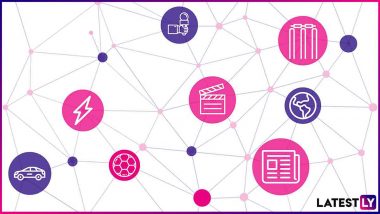New Delhi [India], April 30 (ANI): Ahead of the World Audio Visual & Entertainment Summit (WAVES) 2025, Tejas Networks and Intel today announced the successful integration of Direct-to-Mobile (D2M) capability in Intel-powered laptops enabling delivery of educational content to students across India leveraging Artificial Intelligence (AI).
D2M is a broadcasting technology developed as part of an ongoing proof-of-concept at IIT Kanpur.
It uses terrestrial TV broadcast airwaves to deliver live TV, Video, Audio and text messages (multimedia content) of public and national importance such as entertainment, sports, educational programming and emergency alerts directly to mobile phones and compute devices without the need for Wi-Fi or internet service.
Universal access to education is a critical prerequisite for achieving Hon'ble Prime Minister Narendra Modi's vision for a Viksit Bharat by 2047, a statement by the Tejas Networks added.
By integrating D2M into Intel's personal computing (PC) platform, Tejas Networks and Intel have laid the foundation for a fully integrated compute device that is ready to deliver education without connectivity barriers in a cost-effective manner.
This collaboration between Intel and Tejas Networks is a testament to 'Design in India' and 'Make in India' efforts, the company added.
The innovative laptop design is powered by Intel processor and an embedded antenna coupled with Tejas - SaankhyaSL-3000 SDR chipset for enabling D2M services.
Tejas Networks has also developed a suite of infrastructure hardware and software products for D2M network deployment.
The end-to-end indigenously developed technology powered by SL-3000 SDR chipset has been under test in live networks by Prasar Bharati in partnership with IIT Kanpur and Tejas Networks over the last few years.
Parag Naik, Executive Vice President, Tejas Networks, said, "With the integration of D2M chipsets into Intel-powered laptops, we are unleashing a revolutionary leap in educational content delivery. Leveraging the multicast architecture of ATSC 3.0, D2M platform allows simultaneous transmission of diverse educational content--each tailored for different grades, school boards, or languages--directly to students, even in connectivity-underserved geographies. The award-winning SDR chipset for D2M is powered by an Indigenous multi-core DSP architecture that has gone through 2 generations of field hardening.
D2M is a scalable, cost-effective, and resilient system that ensures inclusive, high-quality learning, no matter where the learner is situated and will catalyze the country's emergence as a knowledge powerhouse in the coming years.
Gokul Subramaniam, President Intel India and Vice President, Client Computing Group, said, "Intel continues to innovate with the ecosystem to bring unique computing experiences to the users and enable them to perform tasks that can transform their lives. D2M technology, as part of our collaborative effort with Tejas Networks, opens a range of new possibilities to deliver content through personal computing and edge devices. We believe the possibilities with this capability in a PC are far reaching for education in India and globally."
Shashi Shekhar Vempati, Chairperson of UGC Committee on Educational Media Reforms said, "In line with Prime Minister Narendra Modi's vision for a Viksit Bharat (Developed India) by 2047, the integration of D2M broadcasting technology with AI-capable edge computing can lead to a full-stack (chips to platform) deep-tech public goods infrastructure purpose-built to deliver high quality educational content to India's youth. This initiative also aligns with the National Education Policy (NEP) 2020's vision of equitable and inclusive education by helping overcome digital access barriers for students nationwide."
This integration of artificial intelligence (AI) with D2M platforms can potentially enable multilingual learning experiences, bridging India's linguistic diversity.
Coupled with the scalability and resilience of D2M networks, India is positioned to create a robust blended learning ecosystem -- combining the depth of digital content with the reach of broadcast media.
This moment also reflects a broader trend: India's emergence as a global leader in foundational technology development, the company said. The international dimension, with collaborations ATSC 3.0 standards, signal India's readiness to not just consume but co-create next-generation technologies with global partners.
Looking ahead to 2047, realising Prime Minister Narendra Modi's vision for a "Viksit Bharat," D2M-enabled devices, AI-driven personalization, and blended learning models will be the bedrock of an empowered, digitally inclusive India, the statement added.
It further added that investing in this deeptech future now, has the potentisl to create a resilient, scalable, and equitable educational ecosystem -- truly a "GPT to Educate Bharat. (ANI)
(This is an unedited and auto-generated story from Syndicated News feed, LatestLY Staff may not have modified or edited the content body)













 Quickly
Quickly













